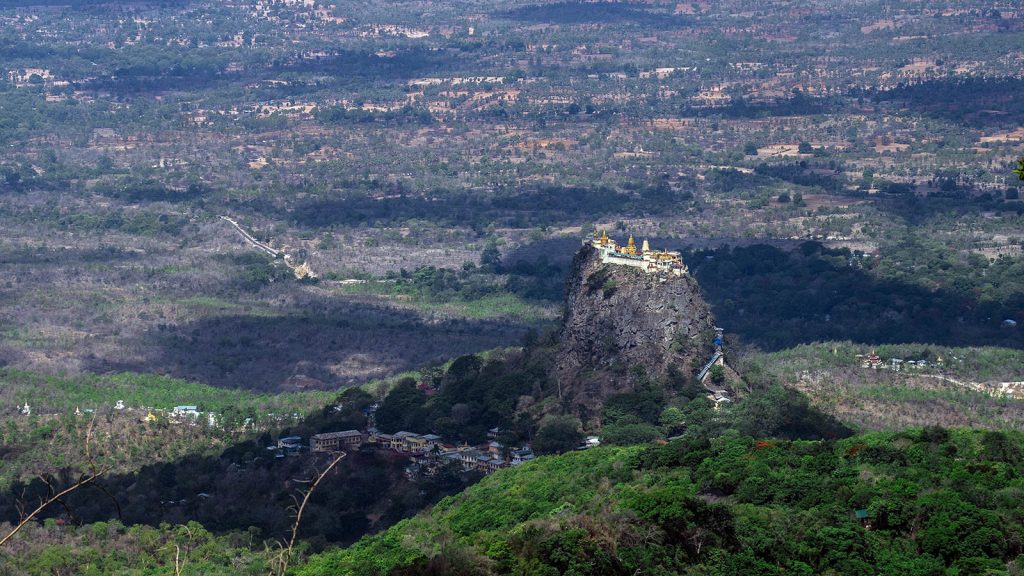23 June
With the first two or three rainfalls of the monsoon season, the high temperatures in central Myanmar have fallen and local residents are at last feeling some relief from the heat. The early rain during the monsoon season reminds me of my annual trekking to Mt. Popa in central Myanmar.

I started to make preparations, including for my motorbike and cameras, and called my colleagues, who have also fallen in love with trekking.
In fact, this year is the fifth consecutive year that I am going on a trekking trip. I still remember my first experiences, five years ago, of trekking to the peak of Mt. Popa, which is 2417 feet high.
I believe that a trekking a mountain makes me healthy. Another reason why I went trekking is because I can take photos that are different from our daily scenes. Being a photographer with the Meikhtila District Information and Public Relations Department also encouraged me to make the trip.
It was in the rainy season about five years ago that I took my first trek to Mt. Popa, along with members of the Meikhtila University Hiking and Trekking Association.
To see the idyllic view of Popa Taungkalat or volcanic plug, which is mistakenly known as Mt. Popa from the mountain, has become a lifelong memory. Clouds are floating under us and around the Popa Taungkalat.
It was on 15 June, 2019 that I set off on my fifth consecutive trip, along with six colleagues, leaving Meikhtila, which is some sixty miles from Kyaukpadaung where the mountain is located. We left our motorcycles at the foot of the mountain and went trekking in the forests, continuing to the peak of Mt. Popa.
I have no words to express my feelings as I walked in the forests in the cool weather, especially for me, since I had been living in hot weather throughout the summer.
During my fifth trip, I noticed that the number of trees was decreasing. Maybe, I think, because of forest fires, which occasionally happen there. We also did not see butterflies, which are believed to be rare species in the South East Asia region and are facing extinction.
But, we did find birds making nests in rocks on the mountain.
After two hours of trekking, we reached the retransmission station of the Myanma Radio and Television, which is about 30 minutes trekking from the peak of the mountain. We stayed there for one night.
“Vegetables are ready for dinner,” one of my colleagues cried, and in his hands he held tender roots and leaves he found in nearby forests. Trekking over two hours, and eating fresh and tender roots and vegetables with fish paste, gave us appetites.
Next morning we proceeded to the peak of the mountain, located 4081 feet above sea level. We also did not miss the chance to visit a pagoda at the top of the mountain. The wind blew very strong, while we were standing near the crater of the extinct volcano. Visitors have tossed coins to the bottom of the crater, which is believed to be 2000 or 3000 ft deep. I thought I would go down into it on my next trip.
Winter is also a favourite season and the trekking in the cold weather attracts students and tourists.
The Popa area is well known as the oasis of the arid region of Myanmar. There are rare species of flora and fauna in the forests of Mt. Popa, which is actually an ancient volcano that sits beside a huge 737 metre dramatic looking volcanic plug.
Mt. Papa has always welcomes local and foreign travellers, including botanists and biologists, to enjoy the natural environment and considerable biodiversity.
By Chantha (Meiktila)
Translated by Nat Ye Hla


